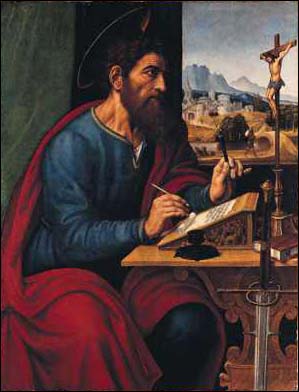You’ve got (ancient) mail!
 When reading any book of the Bible we must first talk about its literary genre. What kind of writing is it? Is it apocalyptic? Is it poetry? Is it historical? The literary genre to which a document belongs affects how we understand it.
When reading any book of the Bible we must first talk about its literary genre. What kind of writing is it? Is it apocalyptic? Is it poetry? Is it historical? The literary genre to which a document belongs affects how we understand it.
If we get the literary genre wrong, it is extremely likely that our interpretation will be faulty. Therefore, when we are looking at a book of the Bible which is an epistle i.e. a piece of correspondence, we must read it as such. It is also extremely helpful when reading a biblical epistle to first examine the conventions of letter writing at the time of the Apostles.
A friend recently asked that we should study the First Epistle of St. Peter together. Since I’ve had to explain the mechanics of ancient letters a few times now, I’ve decided to devote a blog entry to the subject so that I can easily refer to it in future 😀
(There is a technical difference between an “epistle” and a “letter”…
but we’ll ignore that distinction in this post)
Snooping on Mail
To see the structure of ancient letters more clearly, let’s examine a short letter written by a Pagan in approximately AD 150:
Apion sends heartiest greets to his father and lord Epimachus.
I pray above all that you are well and fit; and that things are going well with you and my sister and her daughter and my brother.
I thank my Lord Serapis that he kept me safe when I was in peril on the sea.
As soon as I got to Misenum I got my journey money from Caesar – three goldpieces. And things are going fine with me. So I beg you, my dear father, send me a line, first to let me know how you are, and then about my brothers, and thirdly, that I may kiss your hand because you brought me up well, and because of that I hope, God willing, soon to be promoted.
Give Capito my heartiest greetings, and my brothers and Serenilla and my friends. I sent you a little picture of myself painted by Euctemon. My military name is Antonius Maximus. I pray for your good health. Serenus sends good wishes, Agathos Daimon’s boy, and Burbo, Gallonius’ son.
Deconstructing Apion
There are several distinct features in this letter:
1. Greeting. The author first identifies himself (“Apion”) and then identifies to whom he is writing (his father “Epimachus”):
Apion sends heartiest greets to his father and lord Epimachus.
2. Prayer. The author prays for the health and well-being of the recipients (his father, siblings and niece):
I pray above all that you are well and fit; and that things are going well with you and my sister and her daughter and my brother.
3. Thanksgiving. The author gives thanks to his god (“Serapis”):
I thank my Lord Serapis that he kept me safe when I was in peril on the sea.
4. Body. There is then the main contents of the letter. He speaks a little bit about military life and expresses gratitude to his father.
As soon as I got to Misenum I got my journey money from Caesar – three goldpieces. And things are going fine with me. So I beg you, my dear father, send me a line, first to let me know how you are, and then about my brothers, and thirdly, that I may kiss your hand because you brought me up well, and because of that I hope, God willing, soon to be promoted…
5. Personal greetings. The author asks that his greetings be conveyed to some other people. Finally, he sends greetings from those who are with him.
Give Capito my heartiest greetings, and my brothers and Serenilla and my friends...Serenus sends good wishes, Agathos Daimon’s boy, and Burbo, Gallonius’ son